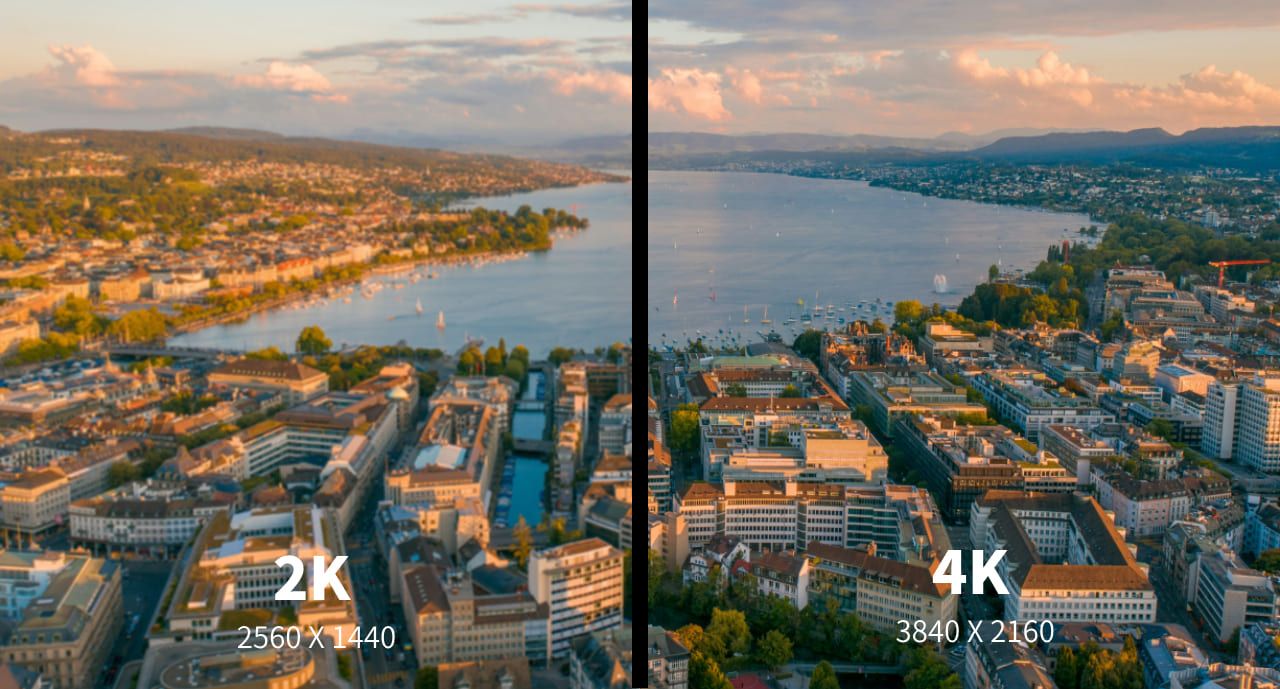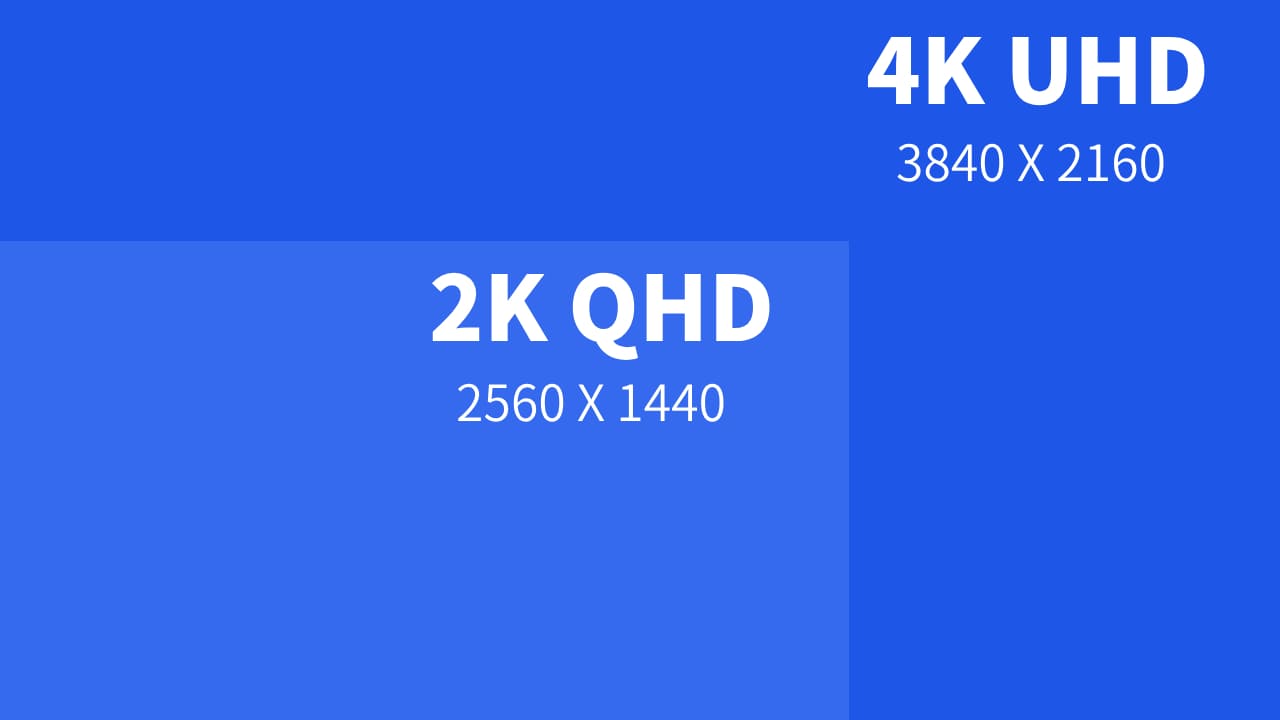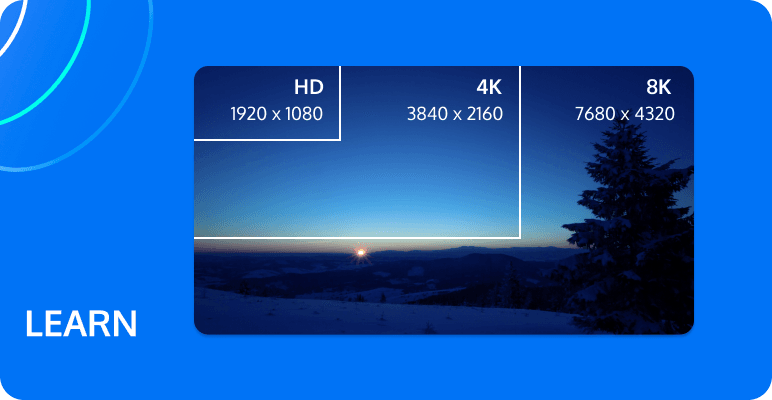2K vs 4K: Does Resolution Revolutionize Viewing?
In the evolving landscape of digital media, the quest for more lifelike visuals has driven the transition from 2K to 4K resolutions. This leap in clarity is not just about more pixels; it represents a significant shift in how we consume and interact with visual content. As we stand at the crossroads of this resolution revolution, it is imperative to dissect the tangible impacts this upgrade has on user experience. From enhanced image sharpness to the demands it places on storage and transmission, understanding the nuanced benefits and challenges of 4K is key to navigating the future of media consumption.
Introduction
The significance of video clarity cannot be overstated in today's media-driven society. As consumers demand more immersive experiences, 2K and 4K resolutions have become staples in media consumption, offering unparalleled detail and realism.

Resolution Fundamentals
2K resolution, often associated with the standard of 1080p, serves as a benchmark for high-definition video. It features a wealth of pixels that present images with clarity and sufficient detail for everyday use. On the other hand, 4K resolution, or 2160p, boasts a significantly higher pixel count, resulting in images that are crisper and more lifelike.
Comparing 2K and 4K
When juxtaposing 2K and 4K resolutions, the differences extend beyond mere pixel count. In terms of Image Sharpness, 4K significantly trumps 2K by delivering images that are not only sharper but offer a level of detail that can be almost four times higher. This sharpness becomes particularly noticeable on larger screens where the increased pixel density of 4K can showcase its strengths without introducing pixelation seen in 2K displays.
Regarding Smoothness, despite both resolutions capable of providing smooth playback, the higher frame rates often associated with 4K content ensure a more fluid motion. For genres that benefit from high frame rates such as sports or video games, 4K provides a noticeable improvement in how smoothly actions unfold on the screen.
The aspect of Storage and Transmission introduces another layer of consideration. The larger file sizes of 4K videos demand more storage space, which could be a deciding factor for users with limited storage capabilities. Moreover, transmitting 4K content requires higher bandwidth to maintain stream quality without buffering, which might not be feasible in areas with limited internet speed or data caps.
Impact on Viewer ExperienceThe resolution of video content plays a pivotal role in shaping the viewer's experience. With 4K resolution, audiences can enjoy a cinematic quality that brings out the minutest details, offering a viewing experience that's closer to what the human eye perceives in reality. This enhanced realism makes 4K ideal for nature documentaries and other content where detail is paramount.
However, the benefits of 4K go beyond clarity and detail. The depth and vibrancy of colors in 4K content are also superior thanks to higher standards such as HDR, which accompanies most 4K displays and content. This leads to images that are not only sharp and clear but also rich and lifelike, wrapping the viewer in a more immersive watching experience.
Yet, it's important to note that these advantages are contingent on having the appropriate hardware. Viewing 4K content on a 2K screen won't deliver the full benefits, and similarly, 2K content on a 4K screen may look slightly better due to upscaling but won't match true 4K content.

Choosing the Right Resolution
Determining the right resolution for your needs involves a balanced consideration of several factors. First and foremost, think about the Content Purpose. If you're creating content that demands intricate detail like high-end product showcases or visually stunning landscapes, 4K is the way to go.
Device Compatibility is another critical aspect. Ensure both the production and playback equipment support 4K to fully leverage its benefits. For users with devices that only support up to 2K, upgrading to 4K content might not yield the expected visual improvement and could unnecessarily strain storage or bandwidth.
Lastly, consider the Viewing Environment. In smaller spaces or on smaller screens, the difference between 2K and 4K may not be as noticeable, making 2K a cost-effective choice without compromising significantly on quality. Conversely, for larger screens in home theaters or public displays where the goal is to wow the audience, the investment in 4K could pay off with its superior viewing experience.
Balancing these considerations with the specific needs and constraints of your situation will help in choosing the right resolution, ensuring not just satisfaction but also the optimal viewing experience for your audience.
Edge of Tencent MPS in Resolution
Balancing Low Bitrates with High Quality: Tencent MPS excels in maximizing video quality while minimizing bitrate, reducing buffering and enhancing Quality of Experience (QoE).
Encoding and Transmission Optimization: By optimizing the encoding process and streamlining transmission, Tencent MPS ensures that videos are delivered smoothly and swiftly, even at higher resolutions.
End-to-End Media Quality Enhancement: Tencent MPS's comprehensive suite improves media quality from creation to playback, ensuring that end-users receive a superior viewing experience.
Conclusion
The transition from 2K to 4K marks a significant shift in digital media consumption. This evolution goes beyond pixel count, encapsulating the industry's shared pursuit of superior visual experiences. As 4K gains traction, it redefines consumer expectations, demanding content that mirrors the richness, depth, and color fidelity of life-like visuals.
In essence, the advancement to 4K is a testament to our collective aspiration for quality and connection. As we continue to enhance these technologies, we're shaping the future of digital media, where every pixel contributes to a richer story.
FAQs
How does 4K revolutionize the viewing experience?
4K resolution elevates clarity, color depth, and immersive details to levels unparalleled by 2K, revolutionizing how visuals are consumed and experienced.
What role does hardware play in the adoption of 4K content?
The full benefits of 4K can only be realized with compatible hardware, signifying the importance of having devices that can produce and display 4K content for the intended experience.
Is the switch to 4K worth it for all types of content?
While 4K significantly enhances viewing for detail-rich content, its worth depends on individual viewing preferences, environment, and the type of content consumed.
You are welcome to Contact Us for more information.

